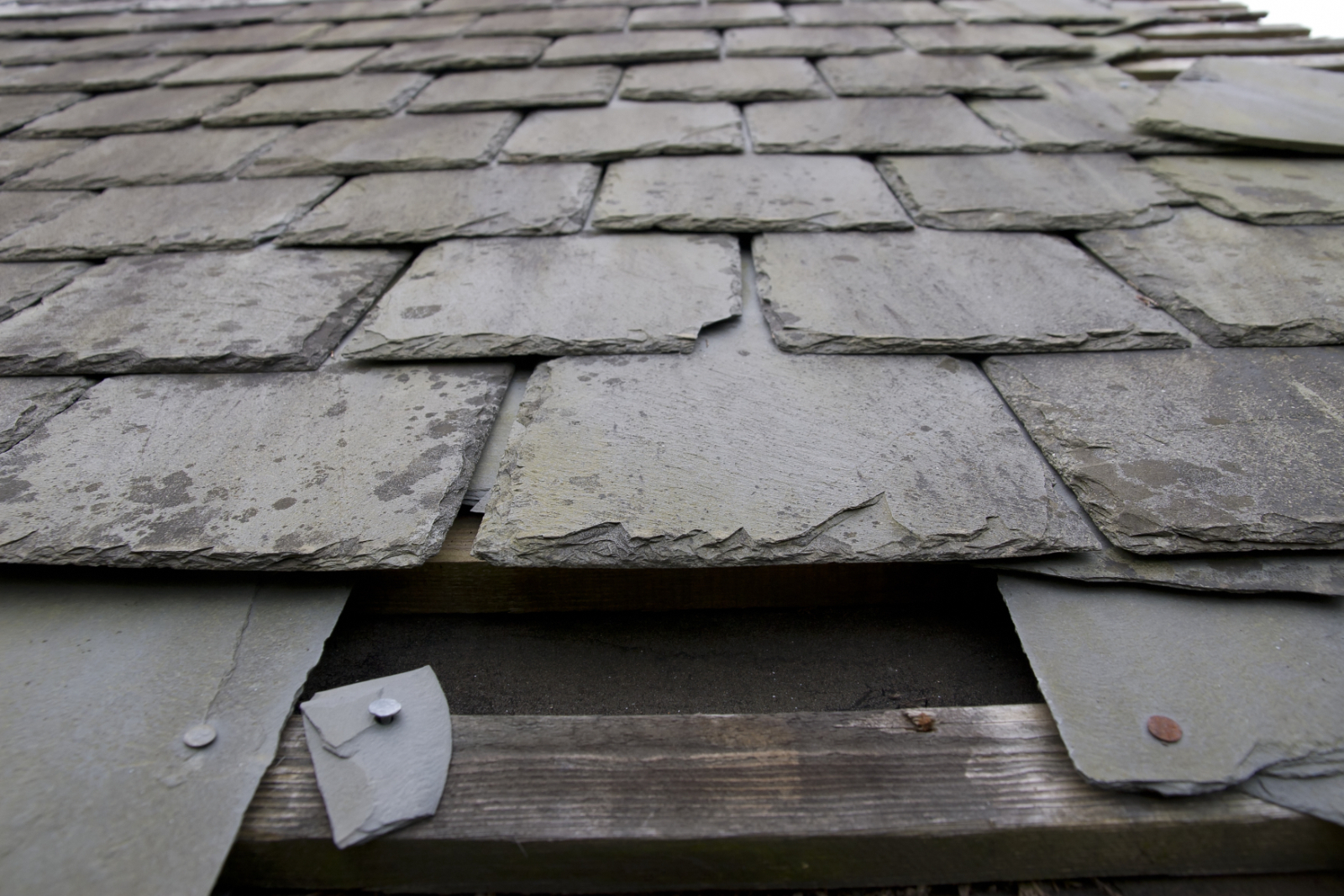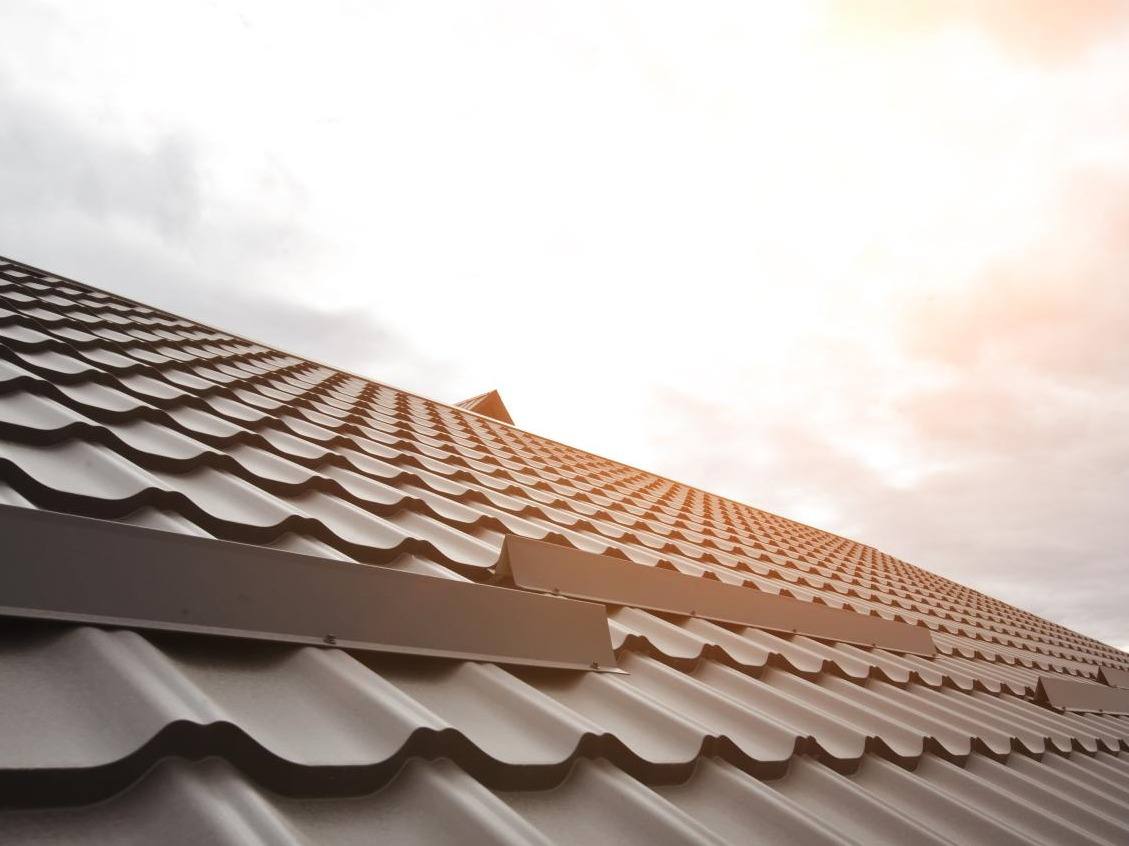When should I reroof my slate roof? This article asks: should I repair or replace a slate tiled roof? Find out if your slate roof needs attention.
Should I Repair or Replace a Slate Tiled Roof?
Slate is a natural material with unparalleled technical features that can last well over one hundred years. In fact, it is common for the supporting timbers and all the fixings to deteriorate before the slate tiles begin to break down. But the important question is how you know whether you need a simple repair or re-slate for your roof.
As time moves on, nails will begin to corrode. This is also known as nail sickness and causes the roof's slates to slip or split. The pegs or battens can also decay due to rot and woodworm. Some other causes of slate roof deterioration include the following:
Mechanical damages such as wind-lift
The delamination of low-quality slats where they split into various layers
The decaying mortar torching underneath the slates
Poor slating practice. One example of this is the use of thin nails that eventually cut through slates
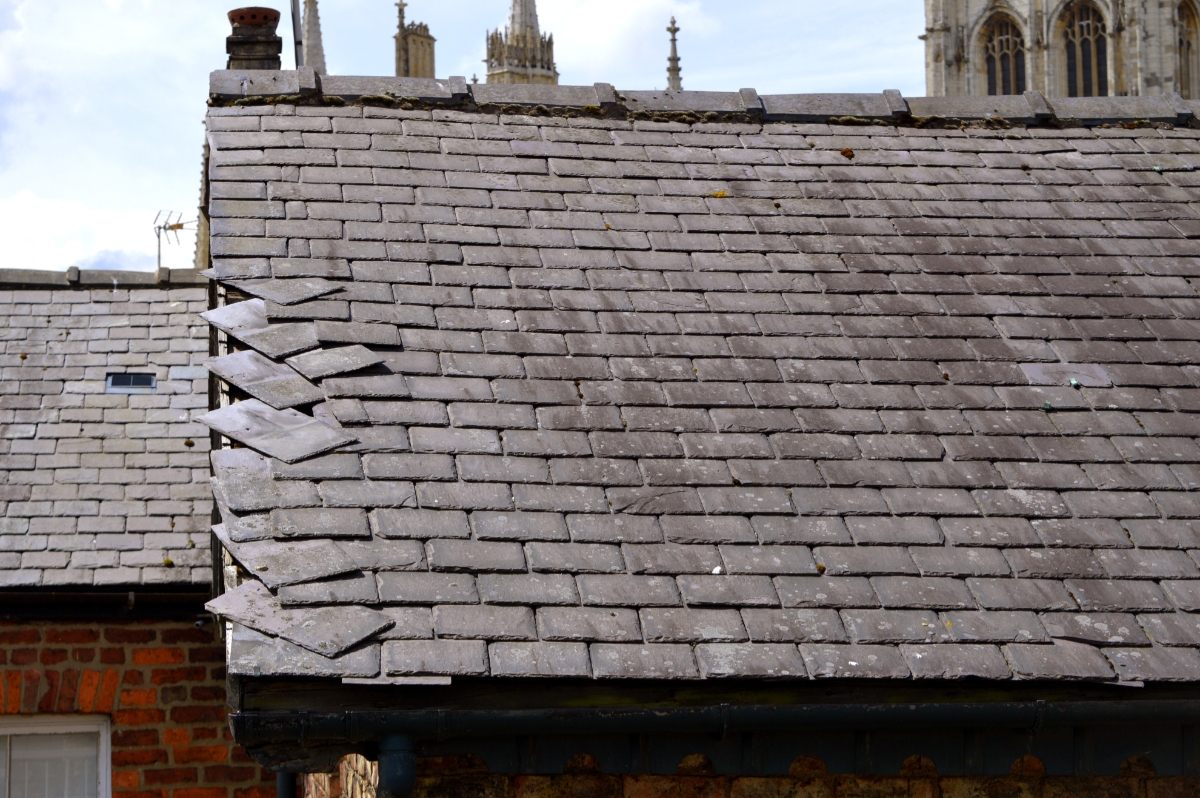
What should you be looking for
When you are looking for issues internally, water damage to ceilings will usually not be under the problem area of your roofing.
Externally, it is recommended that you look out for broken, slipped or missing slates. It may be difficult to do, but you should also know whether the problem slates are all in one area or whether the issue is distributed across the entirety of the roofing.
If the damage to your roof is all in one area, then the problem is likely to be with another aspect, such as chimney flashing, rather than the roofing.
You should also check loose slates for their firmness. The recommended way to do this is to hold a single loose slate by its edge and then gently knock the slate in its centre with a hammer.
The slate should produce a very clear ringing sound if the slate is sound. If, instead, you hear a dull and dead sound, then it is likely that the slate has become porous, is now past its usefulness, and needs to be replaced.
You should also check loose slates for their firmness. The recommended way to do this is to hold a single loose slate by its edge and then gently knock the slate in its centre with a hammer.
The slate should produce a very clear ringing sound if the slate is sound. If, instead, you hear a dull and dead sound, then it is likely that the slate has become porous, is now past its usefulness, and needs to be replaced.
As a general guide, if twenty percent of the roof's original slates have been renewed and the repairs are positioned all over the roof, then any further repairs are considered to be no longer cost-effective. Factors including the state of the property's guttering and other aspects, such as the flashing, also need to be considered.
If you make the decision to repair
Any slates which are slipped, broken or missing need to be resecured or replaced by using copper wire or straps fixings. When a large patch of slates has been refixed, this is known as a partially renewed batten; then, they can be secured by using nails rather than tingles.
It is important to keep in mind that from a home resale point of view, obvious repairs are not good. When a building surveyor notices a repair that uses lead or copper clips, then they might decide that the roof is reaching the end of its lifespan, and they may advise that the roof should be recovered.
A high-quality mastic applied while using the manufacturer's instructions will help to avoid this from happening, along with providing a repair that should last equally as long as any other traditional method.
It is not recommended that you use foam or bituminous-type remedial treatments. These materials reduce the ventilation of your roofing, and this can lead to the risk of timber decay. In addition to this, when it does become time to have the roof replaced, it means the slates can be reused.
You should never reverse your old slates, but you should remember that broken slates still have great value. You should consider storing them for re-dressing or reusing them elsewhere on your roof in the future.
Signs you may need a roof replacement
1
Water damage
The signs of water damage can very easily be mistaken for something else entirely. If you find a selection of damp patches in the upper areas of your home, for example, then you can easily mistake this for suffering from dampness. Mildew and watermarks can very easily be mistaken as simply water that has come through the window from the last time it rained, but you should never be so sure.
Even though your assumptions might be true, these signs can also mean you are in need of an entire roofing replacement or at least need to make some roofing repairs. Even the smallest watermarks and areas of mould can mean that water has begun to make its way into your home from the roof or that your roof has some variety of crack or hole that is causing an issue.
When you find any signs of water damage in your home, you should always check your roof. Do not wait until further damage occurs. This plan can lead to you having to pay high costs to have your roof fixed or even have your entire roof replaced.
2
Mould and moss growth
Another sign that you need to look out for is the growth of mould and moss. If mould and moss have begun to grow on the outside of your roof, then the tiles can begin to force themselves apart. This then creates a gap between the tiles that can let in water.
You should check your roof and look for any tiles that are showing signs of rotting, moss or mildew. You need to deal with this as soon as you can. If you do not, then bacteria and fungi can begin to grow and cause water damage to your property's roofing. If you find a lot of different problematic mouldy areas, then it may be required for you to have a roof replacement.
3
Light coming through your roof
Try to make a habit of turning off all the lights in the upper areas of your home and looking up at the roof every so often. It is recommended that you do this at sunset, this is because it will be dark enough inside your home with all the lights turned off and yet bright enough outside for you to see whether there is any light coming through the roofing.
If there is light coming in through your roof, then this could mean that your roof has cracks and holes. Of course, this needs to be dealt with as soon as possible. You should check your roof to see whether any repairs are needed to fix the damage caused or whether the entire roof will need to be replaced.
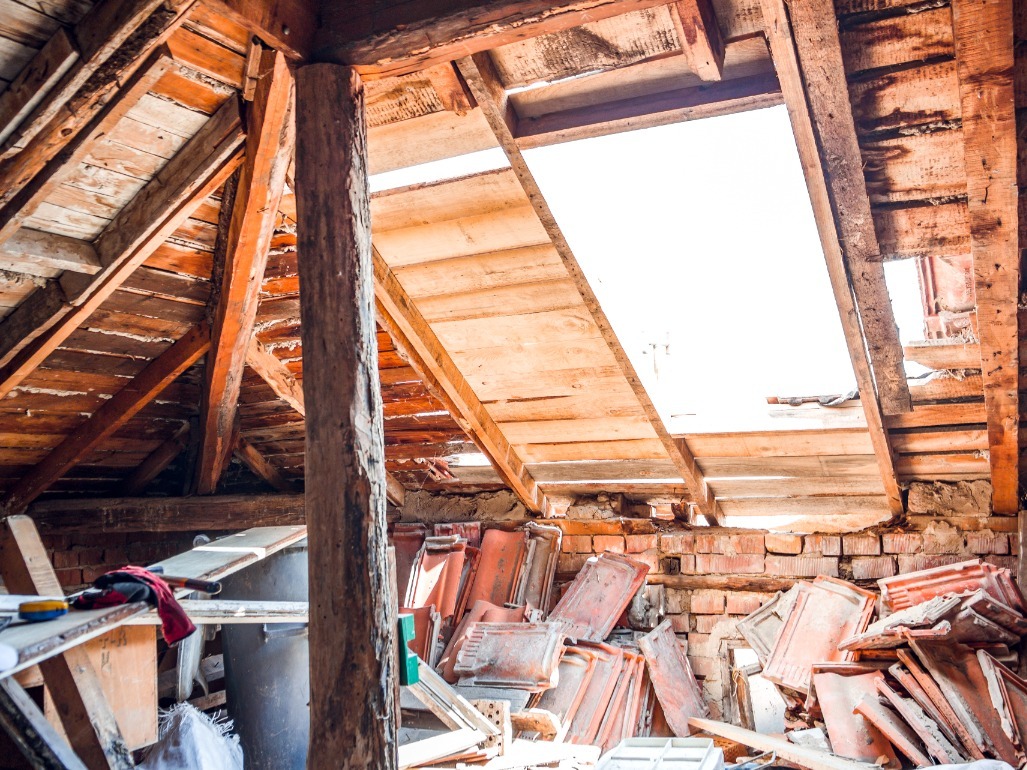
Light coming through roof
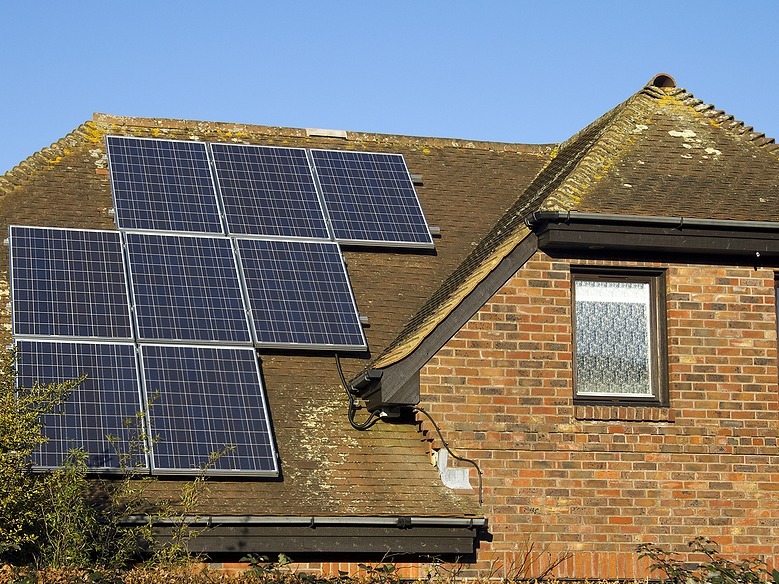
Mould and moss growth
4
Loose roof tiles
While your annual roof check is being conducted, remember to check to see whether any of your roof's tiles are loose. This can easily be done simply by just stepping on the tiles and checking their state. This should give you ample opportunity to assess whether repairs are necessary.
If you locate more than one or two missing or loose tiles, then you need to consider having your roof replaced. Weak roofs with missing tiles or damaged tiles could cave in on you, so it is important for you to act quickly.
5
Sagging
The top of your roof needs to follow a straight line directly along the upper ridge. If you can see a saddleback or a sag in the middle of the roof, then it can be a clear warning sign that there is some variety of structural damage, and this might cause your roof to collapse if it is not detected and treated as early as possible.
Roof sagging can be caused by the roof's constant exposure to moisture. Other reasons why a roof can begin to sag are a huge amount of water sitting on the roof, faulty roofing materials, poor roof installation despite high-quality materials, and the weight of snow and ice on a roof.
In order to lower the chances of your roof sagging, it is important to clear any rainwater from your roof, ensure that your roofing materials are of high quality, and ensure that the roof is installed properly. You can also assess the amount of weight that your roof can handle. During your roof inspection, if you feel as though there is something wrong with the roofing, then in all likelihood, there probably is. You should then enquire about having the roofing fixed.
6
Damaged flashing
Flashing is the material that is placed around any structures that protrude from a roof. Examples of this are roof vents and your home's chimney. Flashing is designed in order to prevent the movement of water falling into your roof by routing the water away from the seams where water runoff is higher. Flashing is made up of very thin pieces of impenetrable materials. The most popular materials used are aluminium and galvanized steel.
Roof flashing can become damaged due to the caulking material under the flashing becoming dried out or simply due to the material deteriorating because of weather and oxidation. Loose flashing is another very common issue. Loose flashing can cause water to seep into your home and leak into your property's walls and ceilings. This can then cause further mould and mildew growth and rotted wood issues which can lead to irreparable damage being caused to your roof's structure.
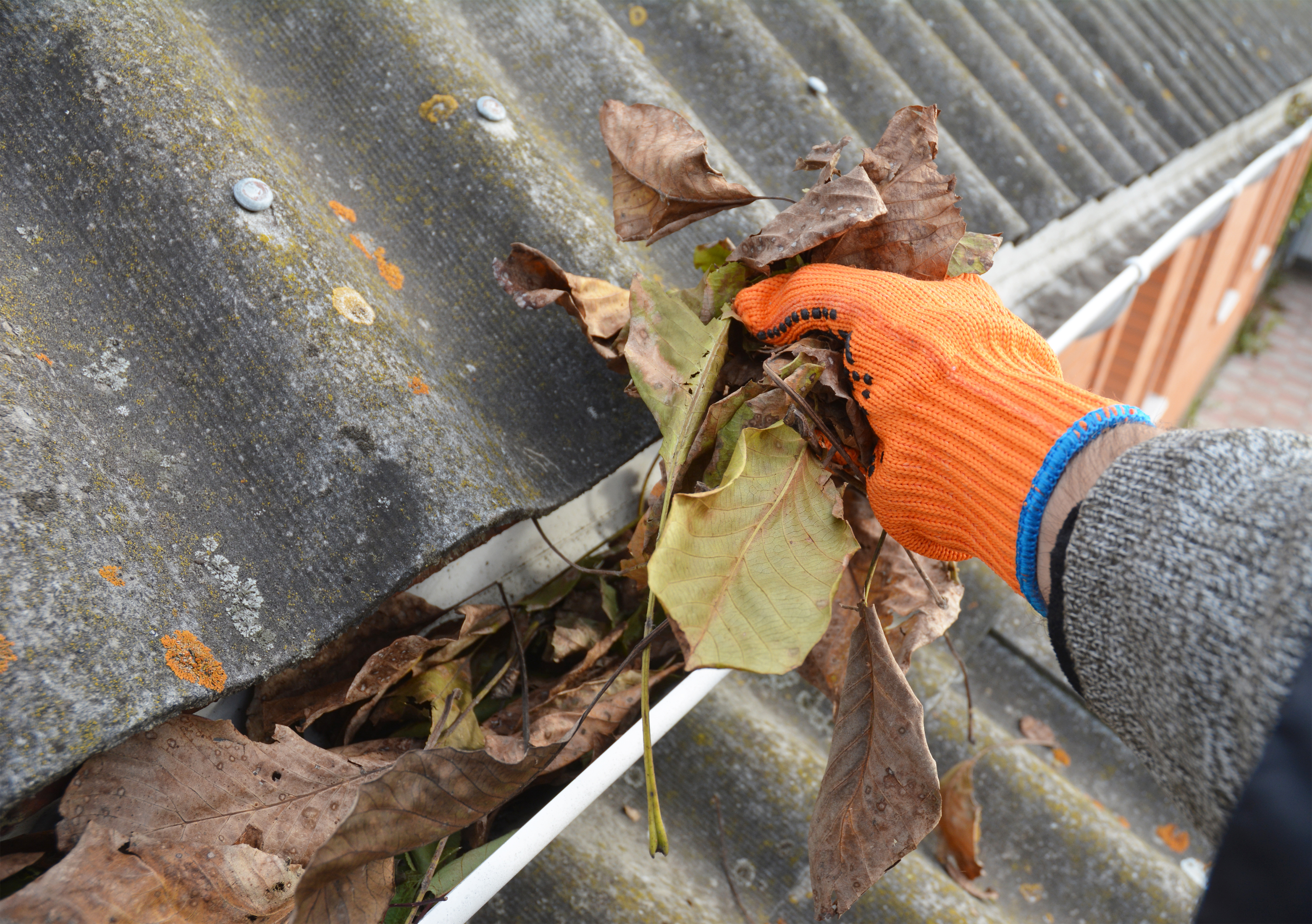
Debris in gutters
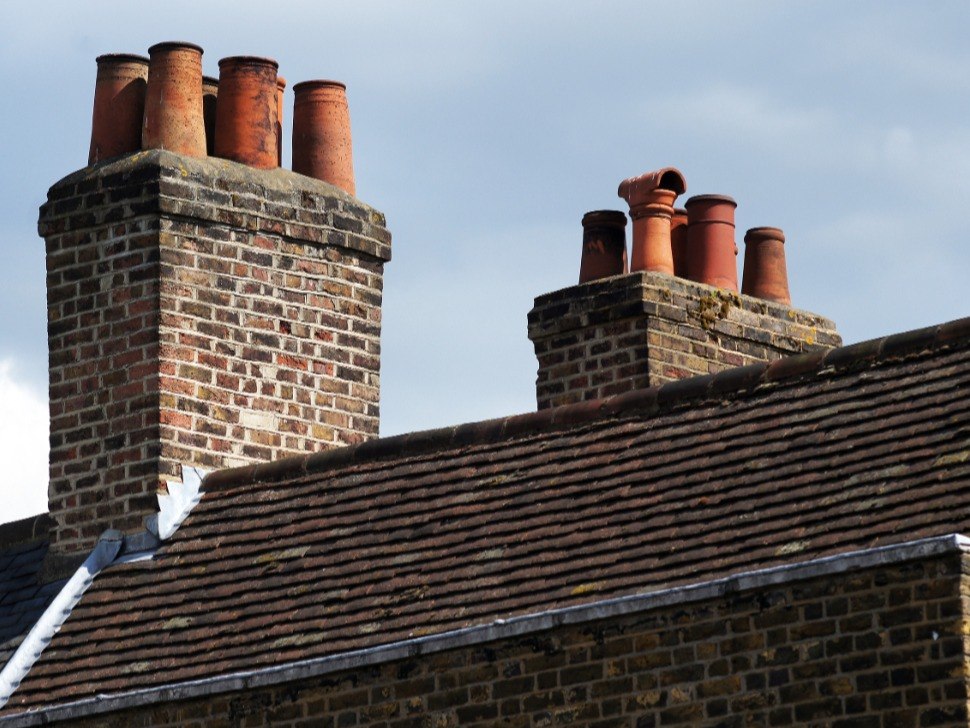
Ageing roof
7
Debris in gutters
It is important for you to check your gutters for any small pieces of asphalt shingles or sand-like granules that are used as a top coat.
This material is used to protect the tiles, and if any granules are falling off the tiles and into your guttering, then it can be a clear sign that the shingles are deteriorating. In most cases, a few loose granules here and there are normal, but if you notice that there has been an increase in the residue, then this is a warning sign.
The protective coating for roofing can tend to fall off due to changes in the atmosphere, constant exposure to weather, long-term usage of the roof, and moisture.
This can all cause the asphalt to weaken. This means that you must aim to repair tiles as soon as possible and, whenever necessary, replace their protective coating. It is important to also check the gutters for any debris that has fallen from the trees surrounding your home. This can also cause the coating of your roof to weaken. Regular garden maintenance is highly important.
It is important to check your roof regularly in broad daylight. If you can see any areas of tiles which are deformed, distorted, curled, or missing their protective coating, then you may need to have some roof repairs carried out.
8
Attic leaks
If you locate any water inside your property, then it is important for you to inspect your roof. Any dark streaks or other leaks in your attic will show that there has been some kind of water penetration.
You can also look for circular stains on your walls or ceiling, the sound of dripping water within your home's walls, or even flat surfaces beginning to bubble up or blister. All of these are signs that there is water getting into your home's attic through the roofing.
Attic leaks are usually caused by tiles being missing from the roof or broken seals under the flashing of the chimney. Some other causes for leaks are a complicated roofline or poorly-installed roofing.
9
Ageing roof
Many different materials can be used when constructing a roof, but in the United Kingdom, the most common roofs that you will see on most homes are installed using tiles and shingles. These types of roofs are purposefully designed in order to be able to stand the test of time, as well as withstand the weather we experience here.
The age of your roofing will determine which materials were used, how the roof was built, and how it needs to be maintained. It also depends on whether a property's roof is made up of a single layer or multiple layers of shingles. If your roof is constructed out of multiple layers of shingles and is more than twenty years old, then you may want to look into having it replaced.
{company_name) offers roof slating and tiling services throughout Preston and the surrounding Lancashire areas. If you are looking for domestic and commercial roofing installations and repairs follow the link below to get in touch.

